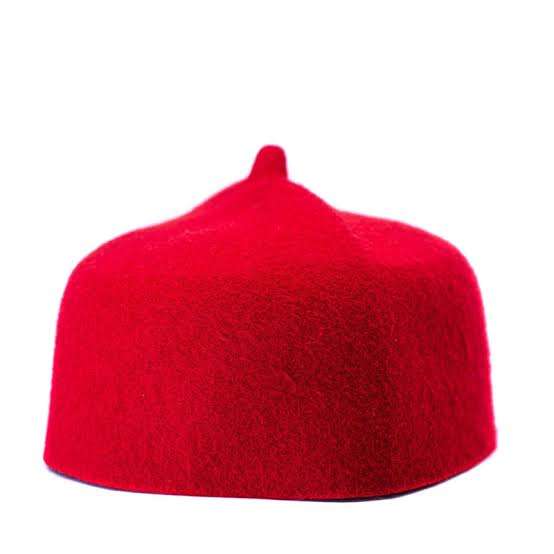Some of our overzealous traditionalists, who unfortunately do not care to trace and study their history, may be shocked or disillusioned to learn that Ndi’Igbo got their much-revered red from white men. Here are some shocking historical facts concerning the red cap.
The red cap is indeed a borrowed customary headdress. The red cap as a headgear was first introduced to Igbo Land (Onitsha & Asaba) by a colonial viceroy Tubman Goldie of United African Company/National African Company/Royal Niger Company.
The fez or red cap was adopted by the Ottoman Turks from the Byzantines. The Byzantines (Greek-speaking Eastern Romans) most likely copied its form from ancient Kemet (Egypt). Ottoman Turks called the red cap tarboosh and popularized its usage throughout the Ottoman Empire which compromised most of the Levant, former Byzantium, Southeastern Europe, and North Africa. Up till 1922, red caps were the standard headwear of the army and government officials of the Ottoman Empire. The red cap was also the headgear adopted by the pre-colonial Royal West African Frontier Force – a multipurpose pre-colonial expeditionary army used by the British colonial office to cow or calm restive and resistant indigenous communities.
With the collapse of the Turkish Empire in 1922, the new President of the Republic of Turkey Mustafa Kemal Ataturk, outlawed (1925) the wearing of red caps, especially by army officers and government officials, throughout the new Republic. Ataturk described the red cap as a symbol of backwardness.
Years back, red caps had come into Northern Nigeria through centuries of cultural contact, diffusion and pre-colonial trade routes, trading posts or centres in outlaying cities of the Ottoman Empire.
Some of the articles of trade of the Royal Niger Company included red caps. The Royal Niger Company had gifted red caps to some families in Asaba and Onitsha who gave it parcels of their lands for its business ventures. The male heads of these families began to sport their spectacular headgear at social events – feasts and festivals of their localities. These hitherto bucolic village blokes instantly became the cynosures, celebrities and fashion trendsetters of their towns. That was how and they incurred the envy and ire of the nobility (ruling class), which overtime confiscated their red caps and decided that those who were not among the nobility should not be allowed to use red cap as their headwear.
Notwithstanding, it took several decades for red caps to be adopted as the formal headdress of traditional titleholders in many parts of Igbo land.
The popularity of red caps among Igbo men, especially members of the nobility (Nze-n’Ozo) in Igbo land, can be traced to Igbo World War II veterans. The revival of red caps has also been linked to cultural renaissance, revisionism and identity politics of Ndi’Igbo after the Nigeria/Biafra war.
For more, get a copy of the book:
Clothing & Dress Codes
by Chinedu Eliyahs



